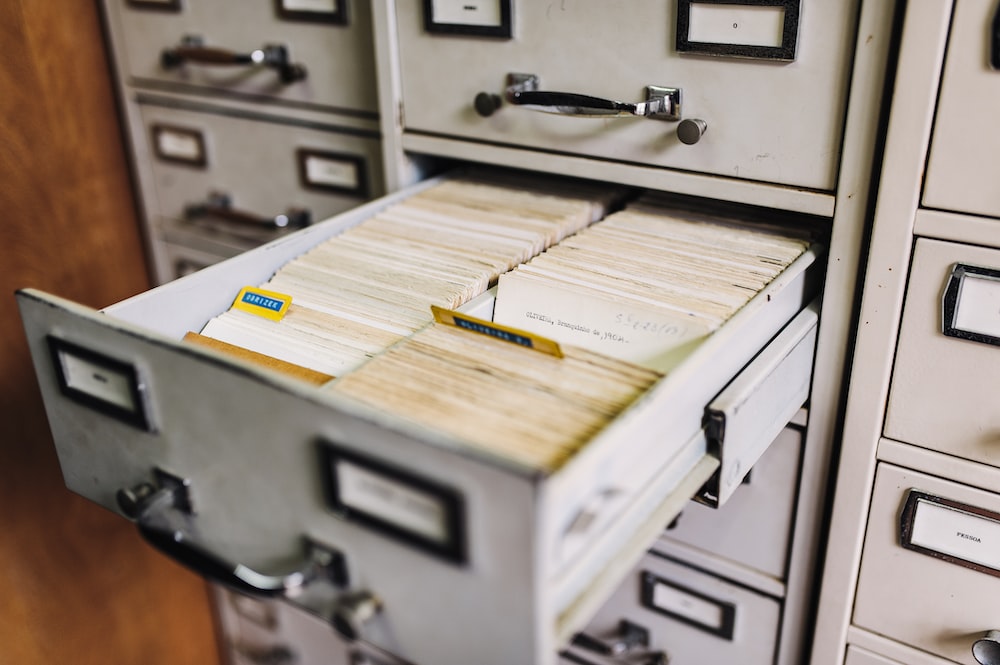
A good file system should have a number of qualities, such as being easy to use, cheap, flexible, safe, small, and easy to get to. Some of the most important file system properties are: 1. Usability. The first thing that makes a file system good is that it is easy to use.
For indexing, you can write names on the tabs of folders or use computer-made strip labels with names, numbers, color codes, and bar codes for electronic tracking. Most filing systems are indexed by file name, account number, or transaction number, and then by number or alphabet. Your choice will depend on what kinds of records you keep and how you plan to use them. Both ways of indexing work well.
Having labels with the same name will help you find the right folder for your file. When you need to replace the manila folder, you’ll know where to put it if you take it out this way.
Simply put, a good filing system keeps records from getting lost or broken. This basically means having enough filing cabinets and folders to keep things in order. This refers to storage that has been backed up and is big enough to hold the needed files.
The goal is to have a filing system that works well and is reliable. It needs to be well-organized so that you can find what you need quickly. It also needs to be easy to use and require little maintenance so that you actually use it.
Paper documents are hard to keep in order, but a messy stack of papers makes life harder. So, today’s topic is how to make a filing system for your home that really works. Choose one that is easy to set up and run so that you can find the papers you need quickly and easily.
Filing is one of the most basic and important parts of running an office. If there isn’t a good filing system in place, documents and records may get lost. This makes it hard and time-consuming for workers to find anything. Having a well-organized filing system and keeping good records can help your office run better in many ways.
The filing system should be simple and not too hard to understand. Accessibility: A good filing system should make it easy to find documents when they are needed. The filing system must let you add new documents without messing up the way the files are set up.
Why is it important for law firms to have good systems for legal filing? All legal work is based on legal records, which include communication and discovery. Your law firm will do very well if you keep these records in order and make them easy to find. When you have a good filing system, it’s easy to find and use legal files. Because of this, you become a better lawyer. But how do you make sure that a law firm’s filing system works?
How well a filing system works depends on a number of things.
Effective filing methods keep information organized and make it easy to find what you need quickly. Simple folder names and simple file management can often lead to clear benefits. This is true for both hard copies and digital files.
What is the most common way to fill something?
When there are fewer than 5,000 records, the most common way to organize them is by letter. When you “file by alphabetic order,” you put papers in the order they appear in the dictionary, based on the names of people, businesses, organizations, and places.
Why is it important to have a good file system?
Getting things done better Well-organized file systems make it possible to be as efficient as possible. This can lead to big wins like: Document administration: With good document management, employees spend less time looking for papers and less time sorting and filing them.
What are the three most popular ways to file?
There are three different kinds of filing and sorting systems: alphabetical, numeric, and alphanumeric.
Which two types of filing are most common?
The most common ways to file are the Loose Leaf method and the Collective method. Before being put in a standard file, documents that were filed individually are punched. Adding and removing documents from a file is easy.
What do some file systems look like?
Some examples of file systems are ExFAT, NTFS, HFS and HFS+, HPFS, APFS, UFS, ext2, ext3, ext4, XFS, btrfs, Files-11, Veritas File System, VMFS, ZFS, ReiserFS, and ScoutFS. There are two types of disk file systems: ones that keep a journal and ones that keep a record of changes.
Where do I store my papers at home?
No matter how small or few the people who live there are, every home needs a place to keep and file papers. This can be done with a cardboard bankers box, a file drawer or cabinet, or a rolling filing basket. It should ideally be at least the size of two file drawers, or an equivalent size depending on the storage solution you choose.
Describe the modern way of filing.
Using this method, documents are filed flat or stacked one on top of the other in order of when they were made. Files are organized by subject, location, alphabetical order, and numerical order so that they are easy to find.